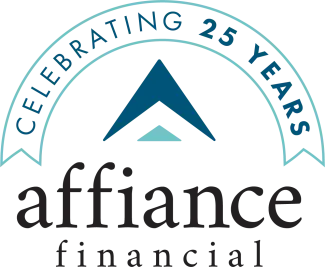
6 Ways to Master Business Cash Flow Projections
Business owners worldwide are aware that unreliable cash flow can harm their operations. Poor cash flow forces many small businesses to close their doors every year. Many factors can impact cash flow, from seasonal performance and unexpected expenses to late-paying customers, decreases in sales, and more. Regardless of your time in business, it's recommended to learn how to master cash flow projections so you can easily overcome obstacles as they present themselves – the business planning professionals at Affiance Financial are here to help.
What Is Cash Flow?
If you are involved in the business world, you have likely heard of cash flow at one point or another. Cash flow resembles the relationship between money coming into your company and money leaving your company. For example, think of a neighborhood bakery sale. Cash flow is the balance between money coming in, or the number of baked goods sold, versus the entrepreneur's expenses, or the cost of ingredients, plastic wrap, paper plates, and more. All money left over is considered profit. To break it down, even more, there are common examples of both where revenue comes from and where it goes below:
- Flowing in: Product sales, service payments, loan proceeds, sale of assets, outside investment in a company, etc.
- Flowing out: Production costs, worker salaries, purchase of assets, principal debt service, operational costs, etc.
It's beneficial to understand why and how you have cash on hand at the beginning of an accounting period and compare these amounts to the money you have left-over after all bills are paid. By familiarizing yourself with how cash flow works for your company, you'll have the opportunity to increase profitability levels through simple adjustments. If you're not already familiar with cash flow calculations, seeking guidance from an experienced business planning professional is beneficial.
How to Calculate Cash Flow
Regularly calculating your company's cash flow is highly recommended, so you can be sure your business is performing how you wish and you're making sound financial decisions. There are many ways to calculate cash flow, and it's best to choose a suitable formula for your unique needs, considering what type of analysis you wish to perform. Business owners commonly calculate cash flow through a cash flow statement, as it shows the flow of cash both into and out of your company during a specific period. To calculate cash flow through a cash flow statement, you'll use the formula below:
Cash flow = Operating activity cash + (-) Investing activity cash + Financing activity cash
While the previous cash flow formula is the most common, many business owners find the cash flow forecast beneficial as it can help you predict where your company's cash balance will be in the future. A cash flow forecast enables you to determine if you'll be able to meet financial obligations, partake in investment opportunities, and more. To calculate the cash flow forecast for your company, you'll use the following formula:
Cash flow forecast = Beginning cash + Projected inflows - Projected outflows
Studying cash flow and cash flow forecast are both beneficial for your business accounting. However, it's also worthwhile to understand operating cash flow or the amount of cash generated by your company's regular operating activities during a specified time frame. Operating cash flow helps you determine how much money you will have on hand within a period to cover general operating expenses. To calculate operating cash flow, the formula below can be used:
Operating cash flow = Net income + Non-cash expenses – Working capital increases
You will likely choose which calculations are most beneficial for your business needs but having a general understanding of each cash flow formula will help you manage your company's finances more efficiently. In addition to the cash flow, cash flow forecast, and operating cash flow formulas, you can also access a free cash flow calculator online.
Managing Cash Flow Projections
Learning how to manage your company's cash flow effectively is a vital component of general business operation. Unreliable cash flow can be catastrophic, which is why it's essential to become familiar with different strategies for effective cash flow management. Learning how to manage cash flow projections will allow you to focus on company growth rather than worrying about meeting monthly expenses.
Get a Well-Rounded View of Cash Movements
It's recommended for any business owner to establish a 360-degree view of company cash movements. Approaching your finances from a perspective like this will help you understand the big picture when it comes to your cash situation, and to do this, you need a cash flow statement to determine your cash flow and a cash flow forecast. A cash flow statement gives you an overview of your current cash situation within a specified time frame. In contrast, a cash flow forecast will help you look ahead and predict any possible problems that might come up in the future.
Help Your Customers Help You
Every business owner is familiar with unpaid invoices, and unfortunately, these expenses contribute significantly to cash flow. It's crucial that you keep track of outstanding invoices, take control, and pursue actionable steps to close the gap between invoicing and receiving payment.
- Send invoices quickly. Rather than waiting to send out invoices at the end of the month, it's recommended to invoice your customers as soon as work or services are completed and products are sold. Sending invoices quickly will minimize the chances of payments being delayed.
- Consider your customer's payment preferences. There are numerous ways to take payment in today's business world, and it's worthwhile to consider what your customers prefer. Whether through direct deposit, a payment app, or mail-in, considering your clients will help minimize late payment issues due to technical difficulties and other obstacles.
- Review the invoice design. While it may be tempting to add some flare to your invoices, it's best to avoid this. Instead, focus on making the content clear, neat, and easy to understand. Your customers are more likely to make payments on time if they can interpret your invoices correctly.
- Look into an invoicing tool. Invoicing doesn't need to be completed manually – especially today. There are many invoicing programs available to business owners that are simple to use and cost-effective. These programs will also make it easier to generate invoices, track and chase payments, issue reminders, and more.
Keep Track of Aging Invoices
Outstanding bills and unpaid invoices can have a significant impact on your company's cash flow. It's recommended to develop a system that helps you track which bills and invoices are currently outstanding and getting close to becoming overdue. Whether this information is stored in a spreadsheet or through accounting software, you must stay on top of these payments so you can have an accurate representation of your company's cash flow.
Who Cuts Your Checks?
Relationships are crucial both in and out of business, but have you ever considered building a connection with your accounts payable staff? Knowing the name and email address of the individual that cuts your checks is helpful as you'll get answers about where payments are and why they might be delayed.
Maintain and Uphold a Financial Cushion
Unexpected obstacles can occur at any time, meaning additional cash can be decreased when you least expect it. Because of this, it's worthwhile to consider maintaining a financial cushion so you're always prepared for the unexpected. Whether you have a business savings account that you contribute to each month or have opened a business line of credit, both are excellent options when it comes to maintaining your cash flow. Many of today's business owners utilize the two simultaneously. Combining a business savings account and business line of credit offers increased flexibility when it comes to expenses and unexpected hurdles.
Formulate an Evolutionary Growth Strategy
You must consider the growth of your business when reviewing cash flow, as rapid growth can result in cash flow issues. While it's recommended to avoid shying away from growth opportunities, taking time to look at the big picture before deciding is best. It's essential to utilize your cash flow forecast to pinpoint any potential obstacles and determine whether you have the means to overcome them by choosing to move forward with a growth opportunity.
Maximize Your Company's Growth Today
Owning a business can be difficult – especially if you're not familiar with best practices and ways to maximize your company's growth. Regularly monitoring your business's cash flow will help you prepare for unexpected obstacles and make it easier to overcome them. If you're ready to make moves to help your business take off, schedule an appointment with an experienced business planning professional at Affiance Financial now.
Please Note: There are no assurances that the content made reference to directly or indirectly in this blog post will be profitable, or suitable for your individual situation, or prove successful. Due to various factors, including changing conditions, the content is only reflective of current opinions or positions and is subject to change at any time and without notice. Moreover, you should not assume that this article serves as the receipt of, or as a substitute for, personalized investment advice from Affiance Financial. Please remember to contact Affiance Financial if there are any changes in your personal/financial situation or investment objectives.


